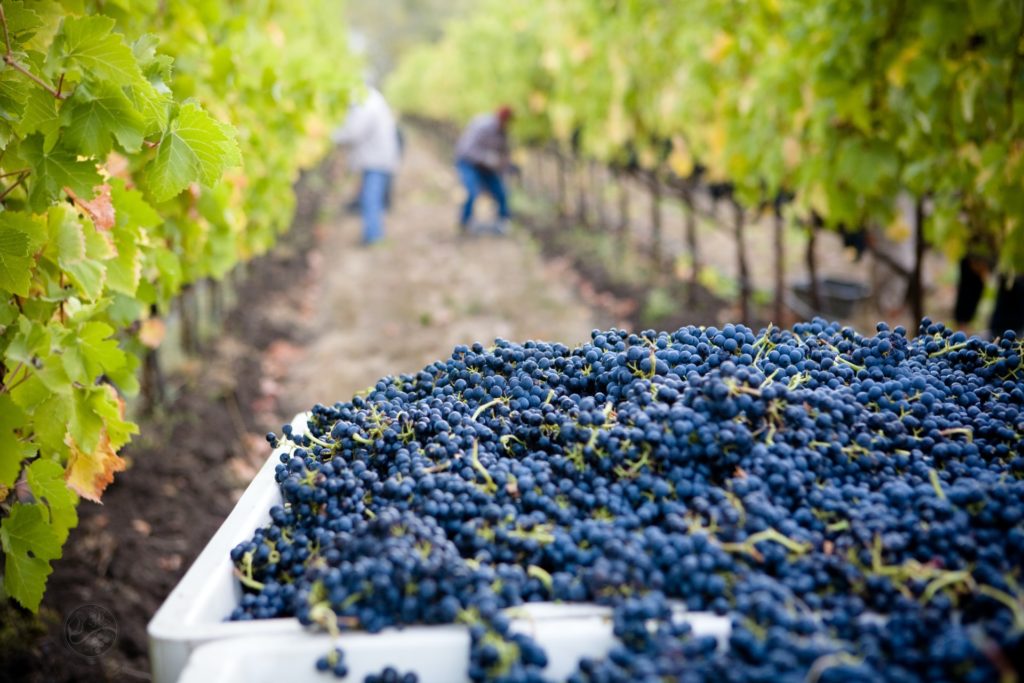The number of Belgian wine growers is increasing year after year and grew by a quarter in 2020 alone, according to the Flemish infocentre for agriculture and horticulture (VILT).
No fewer than 198 wine growers were registered in 2020, compared to 154 in 2019.
“That includes both professional and amateur wine growers,” according to the Federal Public Service Economy (FPS).
“The total Belgian wine production in 2020 is approaching that of the peak year 2018, and this despite the late frost in May 2020 and the excessively hot summer, which led to less juicy grapes.”
Wine has been booming in Belgium, as more and more growers in the country join in, and Belgian wines have even won prizes in international competitions: the Chant d’Éole from Wallonia won the gold medal for “Best Sparkling Wine,” earning the tagline “Best Bubbles in the World.”
Europe has also given nine regions in Belgium special designation as protected wine regions.
“For our company, 2020 was the year of the start,” said Dirk Syx, general manager of the Den Nachtegael winery in Westhoek, right on the French border.
“Belgian wine growing is increasing in prestige and value year after year. The shift from craftsmanship to entrepreneurship is also in full swing. Who would have thought that together with all wine growers we would exceed 500 hectares? And the end is not yet in sight.”
The largest increase in the number of wine growers took place in the provinces of Limburg (37 wine growers compared to 27 in 2019) and Liège (21 wine growers compared to 9 in 2019).
View this post on Instagram
Domaine du Chant d'Éole won the gold medal for “Best Sparkling Wine,” earning the tagline “Best Bubbles in the World.” Post caption translation: The first leaves are here! The vines are starting to take on colour.
Flanders still has twice as many winegrowers as Wallonia with 68% of the total registrations, but Wallonia is beginning to catch up.
“In 2019, only 25% of the wine growers were Walloon - in 2020, that’s already 3%,” said Lien Meurisse, spokeswoman for the FPS Economy.
“Viticulture in our country is growing and flourishing,” added Flemish Minister of Agriculture Hilde Crevits (CD&V).
“The wine growers seem to have the wind in their sails: they are growing strongly and there is a remarkable diversity.”
Crevits, who helped organise the first virtual Flemish Wine Symposium recently (which had over 350 participants), says the sector is increasingly professionalising itself with more formal structures.
“We have given the Flemish knowledge centres the task of helping to build a genuine local wine tradition in Flanders,” Crevits said, explaining how the region plans to capitalise on the growing interest in winemaking.
Despite the fact that Flanders has more wine growers and more cultivated hectares (326 hectares compared to 260 in Wallonia), Wallonia produced considerably more litres of wine, most of which was sparkling.
Out of a total of 1,853,034 litres, 1,003,059 litres were produced by Wallonia, which is about ten percent more than Flanders, according to VILT.
That difference is mainly explained by the higher production of sparkling wine that mainly takes place in Hainaut.
“The production of sparkling wine requires a higher yield per hectare, which has to be limited with still wine in order to obtain a certain minimum quality of the wine,” VILT explained.
Hainaut remains in first place as the largest wine producer in Belgium, with no less than 31% of the total production, or 568,936 litres of wine.
In total, some 587 hectares are used to grow wine in the country.
Figures from the FPS Economy show that a wine grower plants an average of three hectares with vines. Five hectares are generally what’s required to be considered a professional winegrower, rather than a hobbyist.
Only 14 producers in Belgium own more than ten hectares of land.

